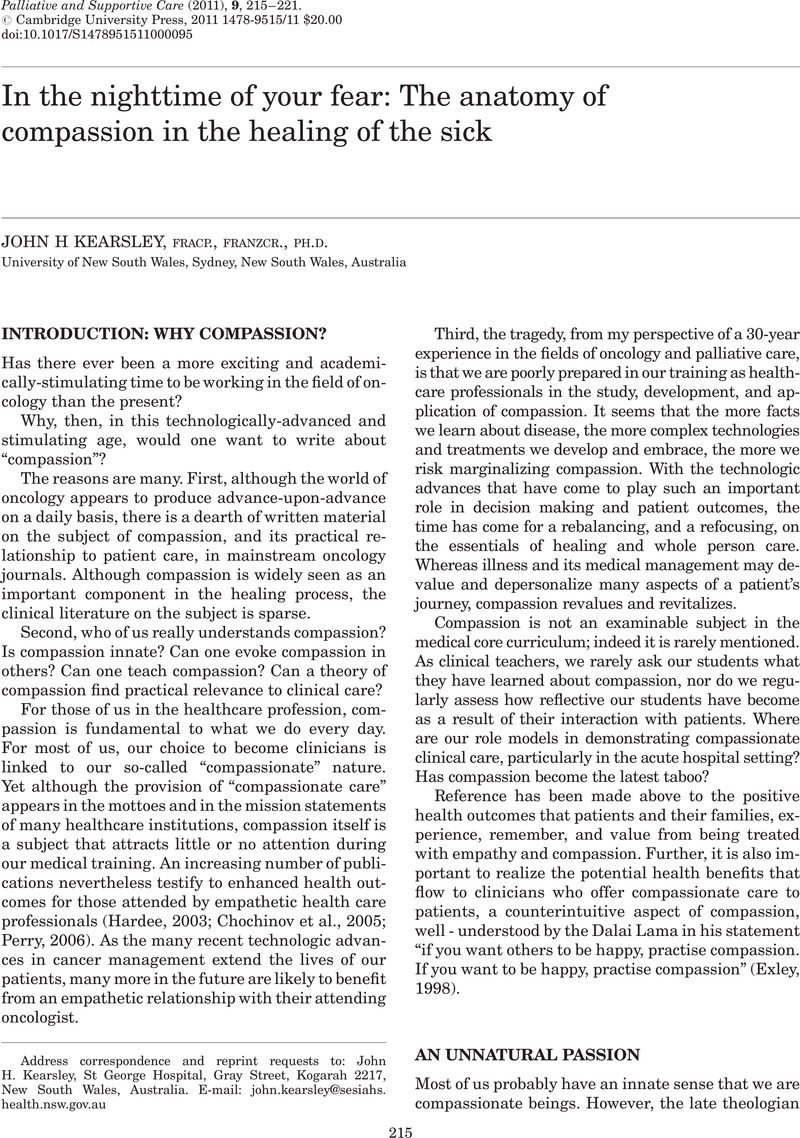Crossref Citations
This article has been cited by the following publications. This list is generated based on data provided by Crossref.
Rumbold, Bruce
2012.
Compassionate care: Engaging the spirit in care.
Progress in Palliative Care,
Vol. 20,
Issue. 2,
p.
106.



